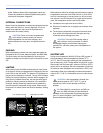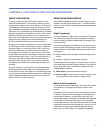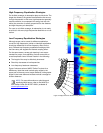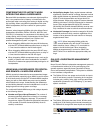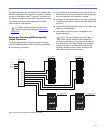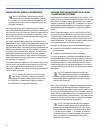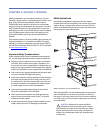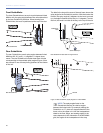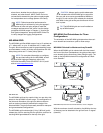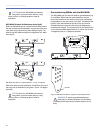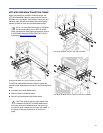
CHAPTER 4: LINE ARRAYS AND SYSTEM INTEGRATION
26
USING DIGITAL SIGNAL PROCESSORS
NOTE: While Meyer Sound strongly recom-
mends using the Galileo loudspeaker manage-
ment system to drive Meyer Sound loudspeakers, the
loudspeakers can also be driven from third-party dig-
ital signal processors.
Full-range signals can be connected directly to Meyer
Sound self-powered loudspeakers because the loudspeak-
ers have built-in active crossovers. External crossovers and
digital signal processors are optional and should be used
with caution as they can introduce phase shifts that cause
destructive cancellations.
If a digital signal processor other than the Galileo 616 or
Galileo 408 is used, the MINA loudspeakers and subwoofers
should be driven from the same processor to keep their
delay times the same. Otherwise a phase shift between the
MINAs and subwoofers may be encountered. In addition,
you should verify the delay time between channels: some
digital signal processors may incur channel-to-channel
delays when the processor is near maximum throughput,
which becomes more likely as the number of filters in use by
the processor is increased.
Third-order filters (and higher) are not recommended. If they
must be used, they should be used cautiously, since they
may cause phase shifts that deteriorate the impulse
response; in addition, their higher roll-off may also interfere
with crossover interaction.
TIP: To address the collective concerns of sys-
tem design verification, subwoofer integration,
digital signal processors, delay systems, and acousti-
cal conditions, a measurement system like Meyer
Sound’s SIM 3 is strongly recommended.
INTEGRATING SUBWOOFERS WITH MINA
LOUDSPEAKER SYSTEMS
MINA systems provide full bandwidth down to 66 Hz. The
height of the array (number of cabinets) determines the total
SPL and low frequency energy (proportional to the upper-
frequency spectrum). If higher SPL is necessary, or the pro-
gram content requires additional low-frequency energy,
subwoofers should be integrated to augment the MINA
arrays.
Meyer Sound subwoofers, such as the 500-HP, 600-HP,
and 700-HP, achieve frequency responses down to the 30
to 39 Hz range, enhancing low-frequency response and
increasing the overall acoustic power of the system in the
lowest frequencies. The ideal ratio of MINA loudspeakers to
subwoofers depends on the following factors:
■ Array configuration (number of elements and angles)
■ Placement of subwoofers, whether they are flown or
groundstacked
■ Frequency content reproduced by the system
For most applications, two MINA loudspeakers for each
groundstacked subwoofer yields good results in frequency
response and headroom. Using higher ratios (for example,
three MINA cabinets for one subwoofer) should be done
carefully since this may decrease headroom in the low fre-
quencies, exposing the drivers in the subwoofers to exces-
sive levels.
NOTE: If subwoofers exhibit limiting (Limit
LEDs light) before reaching the required SPL,
consider adding more subwoofers to meet the SPL
requirements without exposing the drivers to exces-
sive heat and excursion.
Meyer Sound’s Galileo
®
loudspeaker management system
includes filters that facilitate subwoofer integration with
MINA arrays. High-pass filters augment array headroom by
removing lower frequencies near the unit’s lower operating
range, while low-pass filters remove unwanted mid-low fre-
quencies reproduced by the subwoofers. The filters reduce
the area of overlap and minimize the interaction and possi-
ble cancellations between the subsystems.
NOTE: Full-range signals can be connected
directly to Meyer Sound’s self-powered loud-
speakers and subwoofers because they have built-in
active crossovers. However, the use of external filters
— like the ones in Galileo — is optional, and should
be used cautiously to minimize phase shifts that can
cause cancellations and deteriorate the impulse
response of the system.



